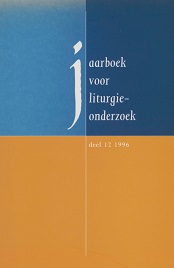'Lex speculum maledictionis'. De voorstelling van 'wet en evangelie' in het Friese kerkinterieur van de 17de en 18de eeuw
Abstract
Summary: 1. The most widespread 'text plate' in the Protestant church interior of the 17th and 18th centuries is that of the Ten Commandments. The fact that this plate and plates with related texts are so frequently found is associated with the problem of the connection between law and gospel. 2. The New Testament teaches that man learns to know and confess his sins by the law and in this way is led to Christ, so that he will be justified by faith. In the explanation many a time the question was brought up for discussion if it involves a chronological destined order with first knowledge of misery by the law and after that knowledge of forgiveness by the gospel, or if there is a unity of law and gospel in a continuing interaction. 3. In the preaching of the 'Closer Reformation', which had a great influence in the 17th and in the first part of the 18th centuries, in a one-sided way emphasis was often put on the misery of man and his sinfulness and there was but little room for redemption and living a life by the mercy of God. 4. The addition of the words "Lex speculum maledictionis" ("the law is the mirror of the anathema") found with the summarizing of the law on a plate dating from 1654, points to a one-sided experience of the law at which the first matter of importance was that man participates in eternal death. 5. The reflection on the relation between law and gospel is not specific for the Calvinistic theology of the 17th and 18th centuries, hut really characteristic is the great emphasis that was laid on this problem and the one-sided emphasis on the sinfulness and the danger of being condemned to everlasting death. 6. The sensation of this theme is not only reflected in the church interior by the plates with the Ten Commandments on them, but also by expressive representations of which at least eighteen are to be found in Frisian churches, in particular on pulpits. It should be taken into consideration though, that in the 17th century the representation of the law was more emphasized and in the 18th century more accent was laid on the representation of the gospel. 7. In a sense the representation of law and gospel can be considered as the Protestant continuation of the Last Judgement, in which there was often an emphasis on hell with its sinners condemned to eternal death.


